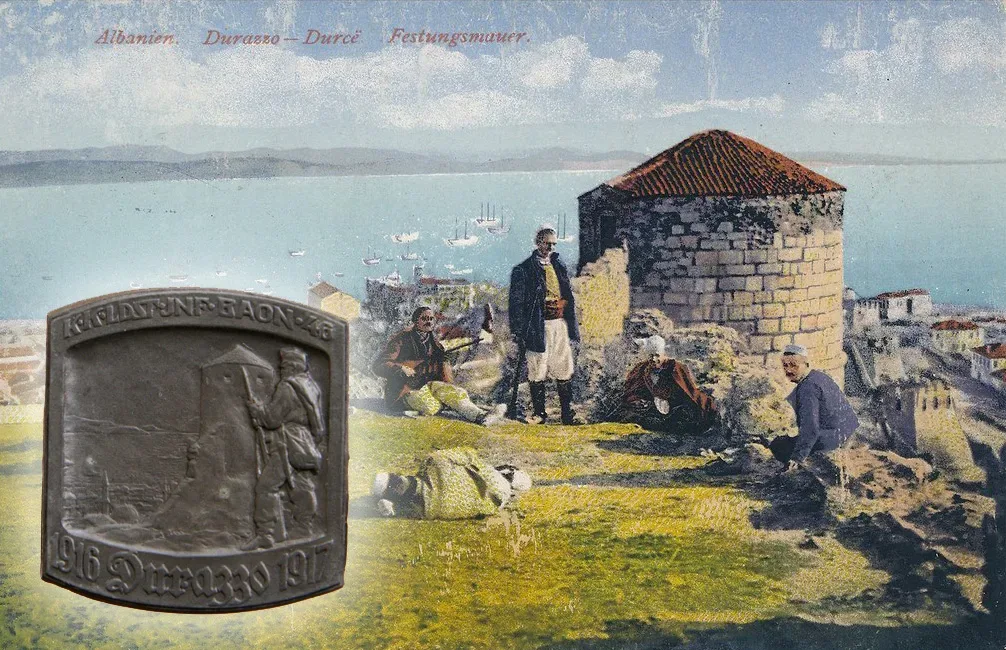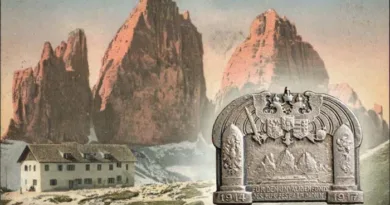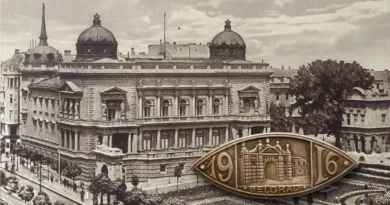Durazzo
As the badges depicting the sights in the Monarchy waned, I also took out some works that show the objects of the conquered territories. After Belgrade and Mitrovica, we get to Albania if we go further south following the armies of the Monarchy. Following the Serbian collapse, the Entente escaped the remnants of Serbian forces through Albania. Of the main Albanian ports, only the northern ones were occupied. The southern part of the country and the ports remained in the hands of the enemy. If we look at the map, the two important southern Italian port cities of Brindisi and Bari are very close by air. It is no coincidence, therefore, that the Italians have always considered Albania to be their own sphere of interest.
Occupied areas included the port city of Durres (Durazzo). Today it is the second most populous city in Albania. It was founded by Greek settlers sometime before Christ in the 7th century. After the decline of the Roman Empire, it came under Byzantine rule, but the Goths, and later the Bulgarians, also sought to gain it. It later became a Venetian estate, but came under Turkish rule from the 1500s. Its population was Islamized. Under Turkish rule, it lost its former significance and its development stalled. Albania was liberated from Turkish rule during the 1912 Balkan War. From 1913 Durres became the capital of Albania, which was formed at that time.

After their entry into the Great War, the Italians hastily annexed Albania. In 1916, most of the country was occupied by the Monarchy along with Durres. The ports were used by the Monarchy fleet. After the fall of 1918, the Austro-Hungarian Balkan corps was withdrawn to the Monarchy via Albania. This was the last substantial battle contact of the Monarchy.

Durres and Durazzo Bay will also appear on the badges of several troops stationed in Albania. These are dominated by two main motifs, the tower of the medieval city wall and the view of the harbor. The city wall was originally erected by the Byzantines and then fortified by the Venetians. Today, only a few sites have survived, with three towers and bastions still standing. I couldn’t find the tower that appears recurring on contemporary postcards and cap badges. I don’t think it’s available anymore. The photo attached to the post was taken between the two wars, when the tower was still visible.


I have attached the badges of the troops stationed in Albania. Divisions 63 and 47 were the backbone of the occupying forces. The 63rd Division was headquartered in the northern part of Albania, in the town of Alessio (Albanian: Lezha), the 47th in Tirana. One of the brigades of this division was No. 211, which also features its insignia with a view of the port of Durazzo. The staff of the two divisions consisted mostly of insurgent troops. Such was the case with the 46th Landsturm Battalion, which produced the third badge published here.




